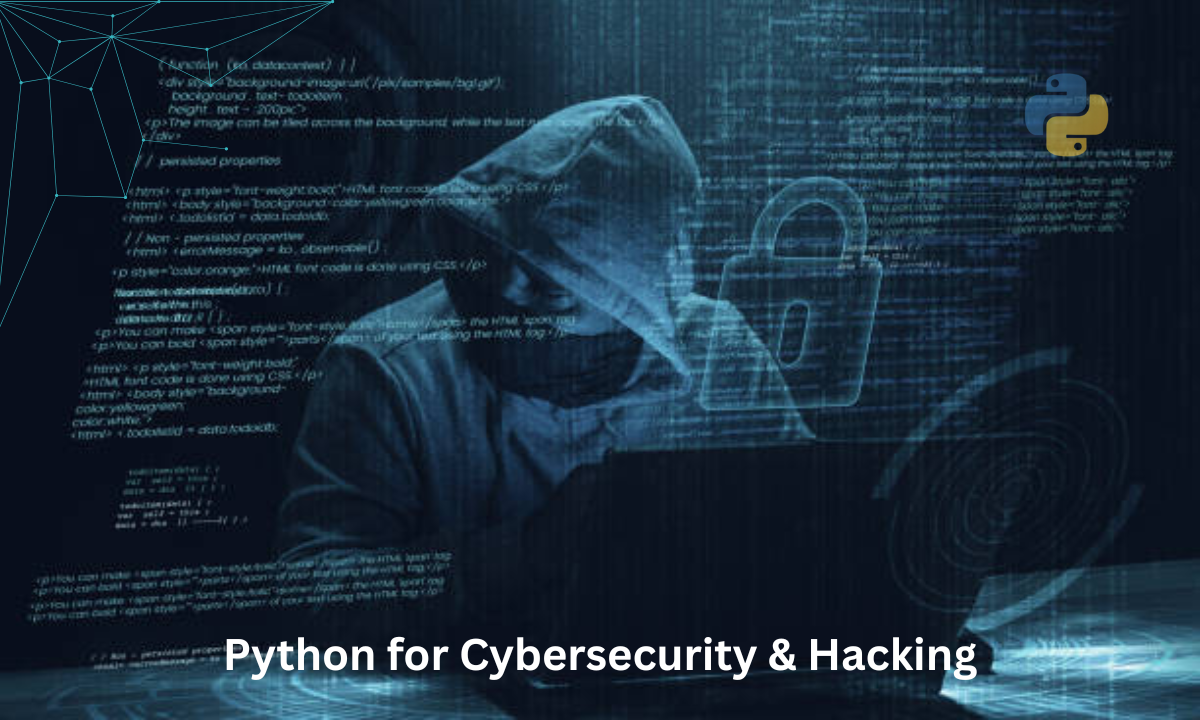Table of contents:
|
1. Why Python Is Ideal for Cybersecurity |
|
2. Key Areas Where Python Is Used in Cybersecurity
|
|
3. Popular Python Tools & Libraries in Cybersecurity |
|
4. Project Ideas to Practice Python in Cybersecurity |
|
5. How I Teach This at Apponix |
|
6. Final Thoughts |
|
7. Frequently Asked Questions (FAQs) |
As a trainer at Apponix, I often explain to our students how Python in Cybersecurity has become a powerhouse tool for both defenders and ethical hackers. If you grasp how to use Python for cybersecurity, you unlock the ability to automate security tasks, analyze threats, probe networks, and build custom tools.
In this article, I will walk you through real use cases, tools, and projects and how you can get started, especially if you are considering a Python course in Bangalore or training at our institute.
Why Python Is Ideal for Cybersecurity

Python’s simplicity, readability, and powerful library ecosystem make it a favorite among security professionals. While languages like C or Rust offer speed, they require more boilerplate detail. With Python, you can prototype quickly, read code easily, and integrate with existing tools. Its cross-platform support ensures your scripts can run on Linux, Windows, or macOS.
Because of these strengths, when we teach Python for cybersecurity at Apponix, students can see immediate results, even with modest prior experience.
Key Areas Where Python Is Used in Cybersecurity
Below are the major domains where Python plays a central role in security, along with examples and tools you can try yourself.
Penetration Testing & Ethical Hacking
One of the classic uses of Python in hacking is in penetration testing. You can automate reconnaissance, scanning, exploitation, and result reporting. Libraries like Scapy allow you to craft and analyze network packets.
You can also use Python to wrap or extend tools like Nmap, Sqlmap, or pwntools to create custom payloads or orchestrate multi-stage attacks.
Network Security & Traffic Analysis
Python is ideal for network scanning, sniffing traffic, and analyzing anomalies. Libraries such as Scapy support packet-crafting, sniffing, and manipulation.
You can build scripts that parse PCAP files, filter suspicious traffic patterns, or alert based on heuristics. This becomes especially powerful in detecting intrusions or monitoring live traffic.
Malware Analysis & Reverse Engineering
When malicious code enters a system, Python can help dissect it. You can write scripts that unpack obfuscated payloads, analyze binaries or logs, and extract indicators of compromise. Some tools integrate Python to automate malware classification workflows.
Python also connects easily with C, shellcode, or assembly routines, giving you flexibility to mix high-level logic with low-level operations.
Automation & Scripting of Security Tasks
Many everyday tasks in cybersecurity are repetitive: scanning logs, checking file integrity, parsing threat feeds, or updating firewall rules. Python scripting lets you automate these with a few lines of code.
For instance, you can write a script to parse system logs daily, flag suspicious access patterns, and email yourself a summary automatically.
Threat Intelligence & Detection Engineering
In modern security operations, you often need to automate detection rules or ingest threat feeds. Python helps you parse data (CSV, JSON, XML), normalize it, and feed it into SIEM platforms or custom detection engines.
You can even adopt “detection as code” practices, writing detection logic in Python and versioning it through Git.
Digital Forensics & Incident Response (DFIR)
After an attack, we need to trace what happened. Python scripts help you scan disc images, extract logs, correlate events, and reconstruct timelines. You might build utilities to search for suspicious files, check timestamps, or validate the integrity of system binaries as part of investigative workflows.
Popular Python Tools & Libraries in Cybersecurity
Here are some libraries I teach frequently because they are versatile and powerful:
-
Scapy – a packet crafting and analysis tool.
-
Requests – to send HTTP requests (used in web security, APIs).
-
Paramiko – SSH handling and remote command automation.
-
Cryptography/PyCrypto – encryption and decryption routines.
-
Impacket – for working with network protocols like SMB and Kerberos.
-
Sqlmap (Python-backed) – SQL injection testing tool.
-
BeautifulSoup/lxml – web scraping and parsing (used in intelligence gathering).
These libraries allow you to build practical cybersecurity tools without reinventing low-level logic.
Project Ideas to Practice Python in Cybersecurity
Here are some hands-on project ideas you can try.
-
Port Scanner & Banner Grabber
Write a script that scans a target range of IPs, identifies open ports, and attempts banner grabbing to detect services. -
Web Crawler and Vulnerability Scanner
Crawl a site, collect URLs, and test for basic SQL injection or XSS vulnerabilities automatically. -
Log Analyzer
Parse server logs (web, SSH, and system), detect failed login patterns and IP blacklists, and alert. -
Password Strength Checker / Cracker (ethical)
Use dictionary or rule-based attacks to test password strength in a controlled lab environment. -
Network Packet Sniffer and Analyzer
Capture live traffic, filter packets of interest, decode them, and flag anomalies. -
Phishing URL Detector
Build feature extraction from URLs (length, domains, special characters) and run a classifier to predict phishing. (E.g., research like PhishNet uses Python + ML.)
Working on these projects will deepen your grasp of how Python in network security and hacking interact.
How I Teach This at Apponix
In our training modules, we start with Python fundamentals and gradually layer in cybersecurity contexts. We build mini-modules around each domain (network security, automation, forensics) so students see direct applications. Our hands-on labs include real-world simulations, capture-the-flag style challenges, and small group projects to build confidence.
We also guide students toward integrating Python tools into their workflow and preparing portfolios of Python cybersecurity projects that they can showcase to employers.
If you're in Bangalore and evaluating training options, Apponix offers structured paths and mentorship. We provide a supportive environment, access to labs, and guidance on how to apply skills in interviews or job roles. If you search “Training Institute in Bangalore” and “Python Course in Bangalore,” you’ll find Apponix among the leading names because our curriculum emphasizes real-world usage, not just theory.
Final Thoughts
As a trainer at Apponix, I see firsthand how mastering Python in cybersecurity transforms a learner into a security practitioner who can operate across domains. Whether your goal is ethical hacking, defense, or threat intelligence, Python becomes your versatile tool, granting agility and power.
When you enroll in a quality Python course in Bangalore at Apponix, we will guide you from the basics all the way to building a portfolio of Python cybersecurity tools and projects that showcase your skills. You won’t just learn syntax; you will tackle scanning, forensics, automation, and detection with hands-on experience. And by the time you finish, you’ll see how your Python scripts can plug into real security workflows, making you ready for roles that demand both coding and security thinking.
I believe strongly: the future of cybersecurity is built on automation, context, and creativity, and Python sits at the heart of it. Your journey starts here.
Frequently Asked Questions (FAQs)
Q1: Is Python enough on its own to become a cybersecurity expert?
Python is a powerful tool in your arsenal, but security also demands understanding of networks, operating systems, cryptography, protocols, and tools. Python amplifies your capabilities but won’t replace domain knowledge.
Q2: How soon can I start building cybersecurity projects using Python?
Right away. Even with small scripts (log parsing, port scanning), you’ll see results. As you progress, you’ll layer more complexity (detection logic, packet crafting).
Q3: Will learning Python help in ethical hacking?
Absolutely. Python allows you to script custom attacks, integrate with existing tools, and automate repetitive steps in a hacking workflow. It often gives you deeper control than point-and-click tools.
Q4: Do I need special tools or operating systems to use Python in security?
You’ll often use Linux (or a security distro like Kali), but Python works cross-platform. Many labs run on Linux, and we teach setup in our labs at Apponix. Tools like Scapy, Impacket, etc., run well there.
Q5: How much time should I dedicate weekly to becoming proficient?
Consistency is key. I recommend at least 8–10 hours per week—split between coding exercises, project work, and studying tools. Over a few months, you’ll see solid progress.




